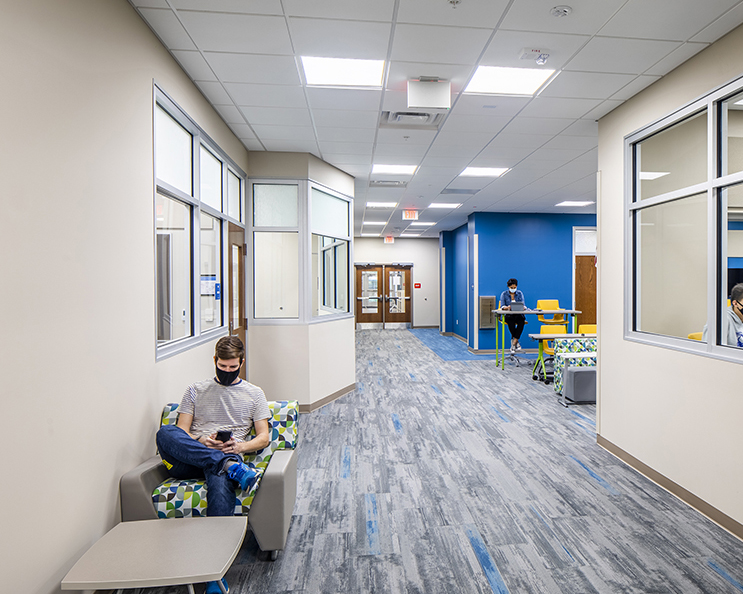Florida has been working to overcome changes in the classrooms caused by COVID-19. As design professionals, we strive to create a balance between spaces that are secure with the resources and environment students need to thrive. To provide safe, comfortable spaces to learn even if they are going to school at uncertain times. As an architect with 14 years of experience designing K-12 schools and a father of elementary-age twins, I know how important safety and security is for students, teachers, parents, administrators and the community.
One design strategy to both enhance safety and foster positive learning experiences is to create smaller learning communities that break down large campuses into personalized program spaces that provide comfort and familiarity within the physical environment. The U.S. Department of Education’s research shows that smaller learning communities can improve academic success and contribute positively to a student’s behavior, confidence and social relationships, which supports their well-being.

This strategy also has inherent security benefits, which are critical in educational design. Each learning community is equipped with technology and door hardware that can be activated in a lock-down situation to keep the area controlled, separated and safe. Combining small learning communities inside the school with a single, secure point of entry into the campus, creates a layered solution that both protects and drives positive educational outcomes.
Good school design is more than just security. It is giving students the spaces they need to feel safe and nurture their success.

Patrick G. Rauch, AIA, is a Principal and K-12 Education Leader at SchenkelShultz Architecture

